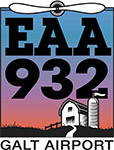UNICOM is a frequency pilots use to request airport information from a ground station which is monitored by FBO staff (not air traffic controllers). A Common Traffic Advisory Frequency (CTAF) is a designated frequency used at, and in the vicinity of, non-towered airports by pilots to self-announce their position and intentions to other pilots in order to avoid traffic conflicts. The CTAF will also be used at towered airports when the tower is not operating. The MULTICOM frequency, 122.9 MHz, may be designated as the CTAF on the VFR sectional for some small, non-towered, airports where there is no UNICOM. This frequency should also be used for self-announcing procedures at any airport where there is no published frequency mentioned on the chart or in the chart supplement, including private/restricted airports.

